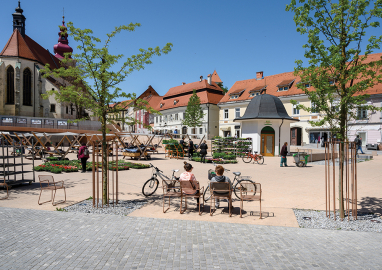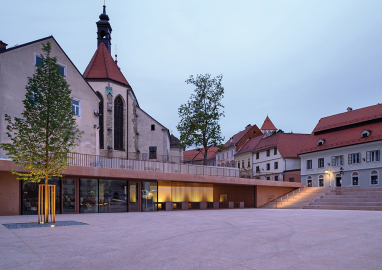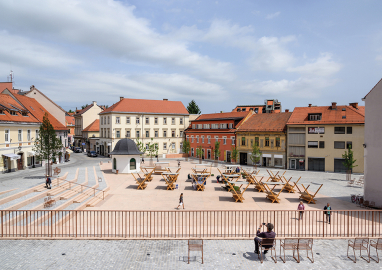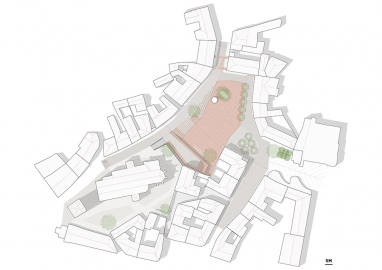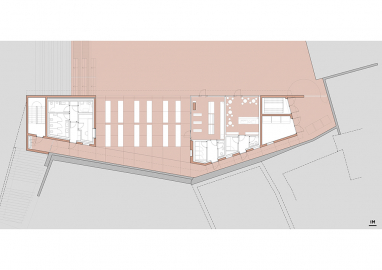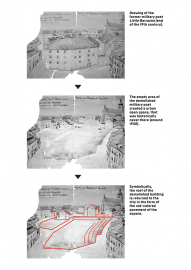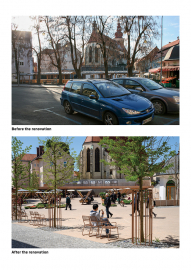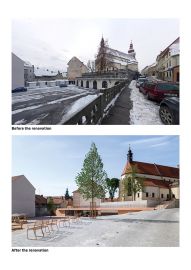Market Square Ptuj
The main task of the project was to give back to the city its social space which was lost over the decades. To create a space for the inhabitants of Ptuj to meet and socialise.
The red colour of brick roofs is what gives the identity to the city and by paving the new square with red terrazzo, we wanted to bring it closer to it’s the everyday users.
The history of the open space behind the St George’s Church in Ptuj started in 1913 with the demolition of the so-called Little Barracks, which the city decided to get rid of to gain more space dedicated to events. The design of the open area from the beginning of 19th century focused mainly on the streets surrounding the marketplace, while the whole area was never considered as a city square. Said space lacked definition and remained wedged between two neighbouring streets and consequently did not come to life as the central social space of the city until today.
Red brick roofs have defined the old centre of Ptuj for centuries. When the Little Barracks were demolished, the city lost one of the largest rooftop areas while creating a new open space. By paving the new square with red terrazzo in the shape of the former building, the city was given back what had been taken from it.
The new red terrazzo area clearly defines the dimensions of the square and the relationships between the existing elements of the open public space. The paving was laid down as an urban carpet, following the silhouette of the demolished Little Barracks and the terrain. This way a physical connection was created in the form of a wide staircase that links the two levels of the square and Slomšek Street.
The urban carpet is not only a design element but also an architectural means that defines the relationships in space and provides functional integrity of broad public area.
In addition to the wide staircase, the area offers its visitors urban chairs that have been designed specifically for this space. Their transparent design and the colour create an anonymous urban background, which accentuates the life of the people in the square.
The chairs were placed into the space either on the square edges or in clusters in the shades of trees, encouraging people to come together and socialise. They really came to the fore during the Corona virus pandemic, being one of the few available seating areas in the city. The life of the city took place around them during the lockdown.
The history of architecture is rich with tectonic transfers from one material into another. The textile rhetoric of the paving in the Ptuj market square is reflected in the composition of the dilatations between individual terrazzo areas. The textile-like pattern of the urban carpet is created of squares with accentuated “stitches” and of pavers as if they were a “hem”, determining the static and execution logic of the monolith floor.
During the construction, archaeological excavation found that the medieval streets in this area were paved with pebbles from the nearby rivers and streams. Drava river gravel was therefore used as aggregate for the characteristic structure of the terrazzo that covers the new marketplace.
In addition to the chosen aggregate, the terrazzo structure is specific in its red-brown pigment creating a rather special urban ambiance.
The overall design, including the marketplace building, is purposeful in its monochromatic, bringing out the variety of colours of the produce and products sold at the market. The square becomes a stage for the daily lives of the citizens of Ptuj.

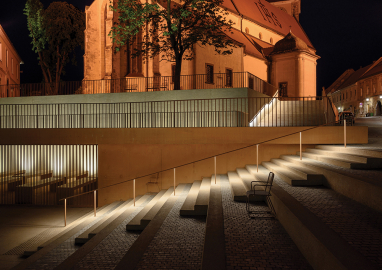 © Miran Kambič
© Miran Kambič
